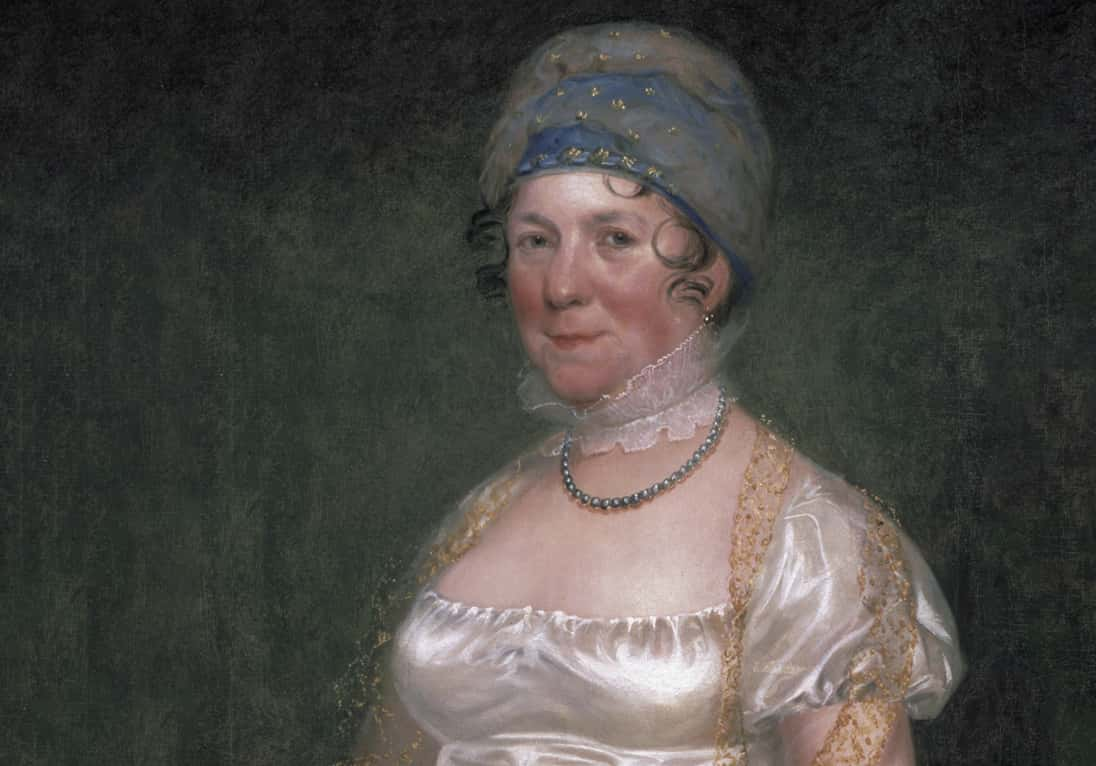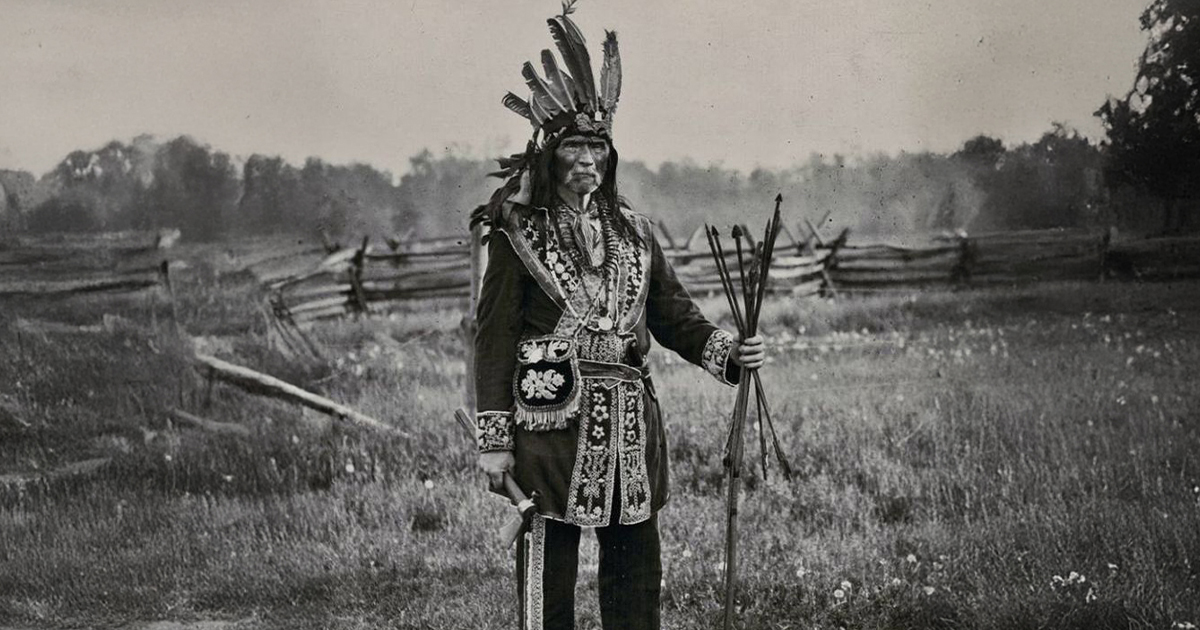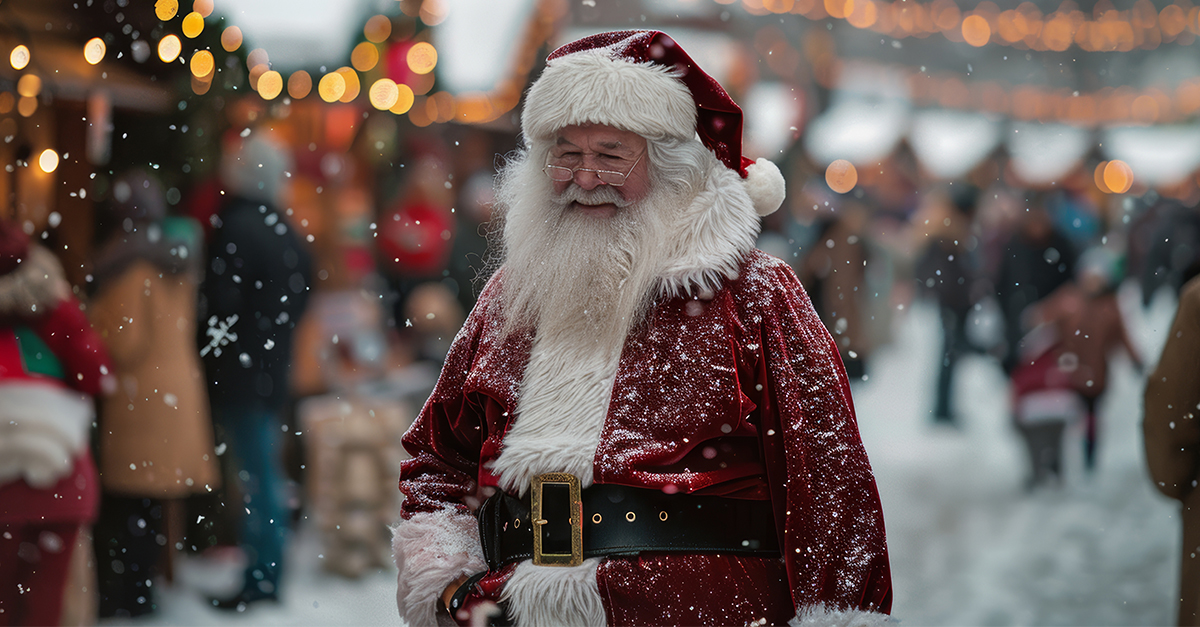The War of 1812 has been swept under the rug over the course of history, and is sometimes considered by historians as nothing more than a side effect of the Napoleonic Wars. Nevertheless, it was a major conflict in its own right, with elements reflecting the cornerstones of North American history in the 19th century and beyond: the formation of Canada as a country, American and Canadian nationalism, American expansionism, fraught relations with Native Americans, and the legacy of conflict opposition in the US. It’s a fascinating piece of history with a diverse cast of characters and some extraordinary tales of bravery and army ingenuity.
44. Blame Napoleon! Again!
Several factors played into why the War of 1812 was ever fought. One of these factors was Napoleon Bonaparte. By this time, he was master of western Europe, and he ordered a block on British shipping. However, the British were masters of the oceans, and they responded with a more effective ban on any ships trading with France. This meant the British would forcefully inspect American shipping. The Americans tried to stay out of the conflict, but still wanted to keep up their trade with mainland Europe.

43. “Remember Chesapeake” Doesn’t Sound Catchy, Though
One problem the Royal Navy had was that its sailors would desert to American ships, so they would take it on themselves to board American ships and reclaim deserters, conveniently tearing up or ignoring certificates which said they had become American citizens. The tipping point was when in Chesapeake Bay, when the US frigate Chesapeake—they were running out of names back then—refused to allow men from the HMS Leopard search their ship for deserters. The Leopard opened fire,liquidated or injured fifteen men, and took four deserters with them to boot.
42. They’re Arming the Indians!
If there was one thing the Americans wanted to do, it was to move out west beyond the original Thirteen Colonies. Much to their frustration, the numerous Aboriginal tribes who lived there called the land their home. The American encroachment caused many of the tribes to band together out of defense, and, for their part, the British supported the formation of a neutral Aboriginal state. This angered the Americans, and many accused the British of supplying the Aboriginals with arms to further their agenda.
41. Continental Conflict
Despite being regarded as a small and insignificant skirmish, the conflict was fought across the North American continent. There was a northern stage, where the Canadian and American border currently sits. Another stage of the combat was fought on the Great Lakes, while a third along the Atlantic coast. The fourth was fought in the southern United States.
40. American Expansion
Something to remember is that the Americans really wanted more land. They wanted the Aboriginal territories, and some even looked north and talked about taking the British colonies there for themselves. While the term "manifest destiny" wasn’t around until 1845, the philosophy and principles of taking the North American continent for their own was very much alive in those days.
39. Who’s Ready for This?! Wait, Nobody?
Despite the angry feelings and the calls for action, neither the Americans or the British were ready to fight a combat. The British were occupied with the wars against Napoleon. As for the Americans, they had a regular army of 12,000 men, and no amount of expansion would allow the new recruits—or the officer class—sufficient training.
38. Combat ! What is it Good For? Verily, Not a Stitch!
Surprisingly, a large part of the American population was staunchly anti-conflict. Despite combat hawks who called anyone who was anti-conflict a traitor, politicians who voted for combat in New Hampshire and New England saw their popularity vanish, along with their careers in office. Some historians argue that opposition to the conflict was more rampant and widespread than against any other conflict the US would later fight. No wonder it’s been swept under the rug of history.
37. Let’s Just Sit Down and Talk This Out
One of the biggest legacies of the conflict in the US was the fact that its existence inspired the New York Peace Party to be formed. This organization spent the next 125 years spreading literature and holding meetings in the name of pacifism. It was the first peace party ever formed in the US, formed in the hope that combat need never be fought. The New York Peace Party finally dissolved in 1940, presumably while looking back at US history and sadly shrugging amongst each other.
36. Keep the Foreigners Out!
Fighting had broken out even before full-scale armed conflict was declared. Americans wanted the Aboriginal lands, including that of the Shawnee on what was later called Indiana (oh, now we get it). The Shawnee leader, Tecumseh, deeply opposed the invaders, and tried to form a confederation with as many of the tribes as he could. While he and many warriors were busy recruiting, the Americans picked that opportunity to send an army to his capital, known as Prophetstown. The jury’s still out on who started hitting first, but by the end, the Americans had destroyed Prophetstown and hailed it a great victory, though it was just the start of things to come.
35. Panic and Traitors in the Ranks
When the conflict was declared, a large majority of the Canadian population was actually made up of former Americans. Kicked out of the colonies after the Combat of Independence, these Americans were now looked at with suspicion by the British. The American government felt the same way, with some saying they would be welcomed into Canada when they arrived.
34. They Needed a Leader
It’s safe to say that the biggest reason Canada didn’t fall in 1812 was due to the efforts of Isaac Brock, despite him dying just shortly after the combat had officially started. The British general had a sixth sense for trouble and so spent a good amount of time before the combat preparing Canada’s defenses and reaching out to Aboriginal allies. The irony of it all was that he really hated being in Canada, wishing he could join his friends in the good fight against Napoleon.
33. What a Coincidence!
Tecumseh and his brother, Tenskwatawa, warned the other Aboriginal tribes that doom would face them if they didn’t unite and wage a united combat against the encroaching Americans. Surprisingly, Mother Nature helped persuade them. On December 16, 1811, an earthquake hit the American continent, which many interpreted as a sign that doom really was coming. Many rallied to Tecumseh’s banner so that by the time the conflict was declared, Tecumseh’s confederation was ready for combat , if they could ally with the British.
32. So Who Struck First?
Surprisingly, though it was the Americans who declared conflict , the first blows of the combat came from the British. The garrison at St. Joseph Island on Lake Huron found out that combat was declared before the nearby Americans on Mackinac Island heard about it. A hasty visit to the island and a single cannon shot caused the surprised Americans to surrender.
31. So Much for Free Speech…
As powerful as the anti-combat movement was in the US, the pro-combat movement was even stronger. In 1812, a Baltimore paper called the Federal Republican was rewarded for its anti-conflict stance with a vicious riot. Immigrants from France, Ireland, and Germany all had serious hate for the British, and they expressed their support for the combat by forming a mob, destroying the offices of the Federal Republican, and torturing its editors. One of them, Revolutionary Combat veteran James Lingan, passed of his wounds.
30. Colonies vs. States
Canada didn’t exist as an entity during the combat. It was made up of several independent British colonies called Upper Canada (future Ontario), Lower Canada (future Quebec), Nova Scotia, New Brunswick, Prince Edward Island, and Newfoundland. Not only that, but Upper and Lower Canada were a fraction of the size that Ontario and Quebec are now.
29. Those Dumb Militia!
Much of American manpower came in the form of militias which each state individually provided. However, in many cases, they made for poor army men. They were badly trained, and many of them refused to fight outside of their home states. President James Madison, who had assumed that militias would take Canada, was left with egg on his face.
28. That’s a Lot of Candles
Most people probably don’t know the name Hiram Silas Cronk, but in 1905, upon his passing, a grand parade was held to celebrate his life. Cronk had been the oldest veteran of the conflict, dying two weeks after his 105th birthday!
27. The Most Badass Team-Up of the 1810s
The alliance between Isaac Brock and Tecumseh is well noted in Canadian history as one of two equals who would normally be enemies, instead meeting and teaming up against a common enemy. Brock praised Tecumseh as being “the Wellington of the Indians” in his writing, while Tecumseh, meeting Brock for the first time, simply said “This is a man!”
26. Missed Opportunities
Isaac Brock and Tecumseh would both meet their ends in the conflict. Brock at Queenston Heights, Tecumseh in the Battle of Thames (which took place in Southern Ontario, not in London). Both losses were grievous for the Shawnee tribe because Brock had promised Tecumseh that he would not negotiate any kind of treaty which didn’t acknowledge a separate Shawnee homeland. Brock’s demise before the conflcit meant we’ll never know just how hard he would fight for his Aboriginal allies, but his admiration for them has been clearly documented, suggesting that he’d have kept his word if he’d lived. Tecumseh’s demise also put an end to his dreams for a pan-Aboriginal alliance and a united front to protect their people from being overrun by the Europeans and Americans.
25. Did They Get a Free Lunch?
On the 11th of July, General William Hull invaded Upper Canada from Detroit, capturing the city of Windsor. Except it wasn’t known as Windsor back then. It was known as Sandwich. No doubt it led to some hilarious newspaper headlines back in the day to report “Hull conquers Sandwich.”
24. I Admire Your Notion of Fair Odds
At the time of the conflict, the population of the United States was eight million, while the future Canadians numbered less than 500,000. At one point during the conflcit, the Americans could call 175,000 militia, and the Canadians called 2,000. Only 6,000 British regular army men were stationed in the colonies.
23. Respect Our Veterans
In 1861, photographs were taken of some of the last surviving Canadian veterans of the War of 1812. This was fitting, as talk of responsible government was catching on, and the conflict had been one of the first major events where Canadians began to think of themselves as Canadian rather than British or Quebecois.
22. No Railroad This Time, Just Make Do
During the conflict, thousands of American slaves saw their chance to make their escape to British ships or Canadian territory. Just like they did during the Conflcit of Independence, the British promised freedom to runaway slaves. Known as the Black Refugees, many of them settled in Nova Scotia and New Brunswick. It was the largest emancipation of slaves until the Civil combat , more than 50 years later.
21. Don’t Shoot the Messenger, Give Her Some Chocolate!
If you asked a Canadian to name a hero from the battle, there’s a good chance that the first name they pick is Laura Secord. While she tended her wounded husband in Queenston in 1813, she was forced to take a group of American army men into her home during the occupation. She overheard plans to attack a nearby British camp, and so she made a 20-mile trek on foot to warn the British of the attack. Since then, she has been subjected to many honors and tributes, including a Canadian chocolate company which named itself after her. What’s better than a chocolate-coated history lesson?
20. Fighting Fire with Fear
One of the most effective tactics that the British and Canadians used during the conflcit was playing to the American’s fear of the "savage" Aboriginals. At the siege of Detroit, Tecumseh and his warriors raised a huge racket to make its commander convinced that there were thousands of them, while Brock played up the fact that he would have no control over them if it came to battle. The same tactic worked at the Battle of Beaver Dams, according to a report written by James Fitzgibbon after an American Colonel and six hundred men surrendered to him.
19. He Lost Detroit? Somebody Shoot Him!
Brock and Tecumseh’s early taking of Detroit in 1812 was a huge shock to everyone invested in the conflict. The British and their Aboriginal allies were inspired, while the Americans were so outraged that they put the hapless General Hull through a court-martial and sentenced him to demise. His sentence was ultimately commuted, but only because President Madison argued that Hull had fought well in the Conflict of Independence.
18. Get Them Before They Get Us!
After Detroit was taken, Brock planned a counterstrike into New York State, as he was convinced that the Americans could easily invade Upper Canada through the Niagara River. However, the Governor General of Canada, Sir George Prevost, arranged an armistice with the Americans instead. When it ended that October, the Americans invaded, Brock engaged them at Queenston Heights, and met his end during the combat, presumably cursing Prevost’s name.
17. It’s Good to Be a Pirate… Sorry, Privateer
During the War of 1812, the British and Americans fought a vicious series of battles on the Great Lakes and the Atlantic Ocean. The Americans won a surprising number of victories against what had been known as the best navy in the world. But for all the success of the American Navy, the real success came from American privateers, who could also frankly be referred to as government-endorsed pirates. While the Navy captured 254 British ships, the privateers claimed over 1,000—though nearly three quarters of them were eventually recaptured by the British.
16. We’re Fighting a Whole Other Conflict Here!
In the middle of the conflict, the Americans also got involved in another combat in the territory now known as Alabama. It started as a vicious conflcit amongst the different Creek tribes and factions, but one thing led to another, and the end result was that in 1814, the Americans stepped in and Andrew Jackson forced the Creek tribes to give up more than 21 million acres of their land to the Americans. This, coupled with the victory at New Orleans a year later, was what helped Jackson become president.
15. We Don’t Actually Do That Anymore…
In one of the ironies of history, the defeat of Napoleon in 1814 removed any serious need for more sailors in the Royal Navy, so they stopped their practice of pressing men onto their ships or raiding foreign ships for deserters. Of course, it was a bit late by that point.
14. A Record Number for the Conflict
The bloodiest battle of the War of 1812—and one of the bloodiest battles ever fought in Canada—was Lundy’s Lane on the 25th of July, 1814. More than 1,600 men were liquidated or wounded, and the brutal close-quarters fighting shocked even the veterans of the Napoleonic Wars. Not even the legendary US general, Winfield Scott, walked away unscathed from the fight. Much like the conflict's end, the battle’s victory was contested and inconclusive.
13. The Story of a Ship
So, as the War of 1812 raged on, what happened to the Chesapeake? After helping to inspire the conflict, the Chesapeake went on to capture six British ships before being captured herself after a vicious showdown with the HMS Shannon. Because of her spotty record—plus the fact that two of her captains were court-martialed—she was regarded as a cursed ship. Eventually, she was dismantled in 1819 to help build the Chesapeake Mill in Wickham, but in 1996, a sliver of her wood was returned to the US, where it’s on display in the Hampton Roads Naval Museum.
12. Farewell, Brave General
So well-known and respected was General Brock that when he was buried, five thousand people stood in attendance. This number is even more remarkable given how sparsely Upper Canada was populated in those days. Additionally, after the British had fired their 21-piece salute, the American fort on the other side of the Niagara River fired their own salute out of respect for an admired enemy who’d lost their lives leading his army men by example.
11. The Birth of Uncle Sam
During the conflict, an army supplier named Sam Wilson was in Troy, New York, sending barrels of meat rations for the army men. The label on the barrels, “US,” was jokingly referred to as standing for “Uncle Sam”, since he was feeding the American army. Although his famous image didn’t appear until WWI, the War of 1812 was where Uncle Sam was truly born, making him over two hundred years old.
10. Just Some New Building Projects
The War of 1812 inspired Canadians to fortify some cities in case the Americans tried to invade them. Throughout the 1820s, additional defenses were added to Halifax and Quebec City. Fort Henry was built to protect the Upper Canadian capital of Kingston, while the Rideau Canal was built in Ottawa, then called Bytown, as a precaution in case conflcit broke out again and the Saint-Lawrence river became unsafe for shipping goods upriver from Montreal.
9. The Real Defeated of the Conflict
While historians have argued back and forth over who won or lost the War of 1812, it’s safe to say that the Native populations were the ones who truly lost the most. The suggestion of giving them neutral territory was rejected at the peace talks and brushed under the rug. They were abandoned by their British allies, and so had no choice but to make deals with the encroaching Americans or else flee.

8. In Hindsight, This was a Great Idea!
Although they failed to conquer the Canadian colonies, American morale was hugely boosted by the conflict. They saw it as a second conflict of independence from Britain, and their final victories during the combat only fuelled their sense of nationalism. Their army was improved and expanded, they gained huge amounts of land from defeated Aboriginal tribes, and things were so optimistic that the post-conflcit period has literally been called the Era of Good Feelings.
7. A Song is Born
On the 14th of September 1814, a lawyer named Francis Scott Key witnessed the Royal Navy bombard Fort Henry during the Battle of Baltimore. Despite the damage and destruction, the Americans successfully defended Baltimore. Key was inspired to write a poem about the spectacle he witnessed. The poem was later set to the tune of a popular British song and immediately became popular throughout the US. You might know it as “The Star-Spangled Banner."
6. No Need to Thank the First Lady… Seriously, Don’t Thank Her
During the attack on Washington DC, a famous story arose that President James Madison’s wife, Dolly, managed to take the large portrait of George Washington from its frame and take it with her before it was lost. However, according to Madison’s personal slave’s memoirs, it was actually the President’s gardener and door-keeper who rescued the painting from destruction. Credit where credit’s due!
5. A Very Inclusive Combat
A total of five future US Presidents actively fought in the War of 1812, whether as officers or as enlisted men. They were: John Tyler (Captain), James Buchanan (Private), William H. Harrison (Major General), Zachary Taylor (Captain), and Andrew Jackson (Major General). On top of that, Martin Van Buren was involved in the court-martial of William Hull after he surrendered Detroit.
4. Burning Down the (White) House
In 1814, the British launched an attack against Washington DC in revenge for the Americans attacking and burning York—now known as Toronto. In the one of the most painful army defeats in American history, the British managed to set several government buildings ablaze, including the White House itself (though it wasn't yet called that at the time). It's commonly cited that the White House was painted white to hide the scorch marks from the fire, but in reality nearly all of the building had to be torn down and rebuilt because the damage was so extensive.
3. Divine Intervention? Doesn’t Feel Like It…
According to legend and history alike, the fires which burned Washington’s buildings were put out by a heavy storm which may have been a hurricane. It’s often call the “Storm that Saved Washington” because it put out the fires. However, it’s worth pointing out that the storm likely exacerbated any damage done to the buildings. It was recorded that while the storm was ravaging Washington DC, a woman declared to British Admiral George Cockburn that God was sending the storm to drive the British out of the city, where he replied that the storm was actually helping the British destroy the city.
2. So… It Lasted a Year?
Despite what its name would suggest, the conflict actually lasted from June 18, 1812, until February 18, 1815. That’s an even two years and eight months.
1. A Pointless Battle
The last battle of the Conflict was the Battle of New Orleans, fought in Louisiana on January 18, 1815. British army led by Edward Pakenham were utterly defeated by Major General Andrew Jackson. The victory was hailed throughout the US, and Jackson later used his role in winning the battle to become elected President. Ironically, the Treaty of Ghent had been signed on Christmas Eve, 1814, meaning the combat was already over when the battle was fought. Ahh, the days before email.
Sources: 1, 2, 3, 4, 5, 6, 7, 8, 9, 10, 11, 12, 13, 14, 15, 16, 17, 18, 19, 20, 21


















































